Germany, during the Weimar Republic & the hyperinflation
We hope you enjoy and/or are educated by the following chart pictures of the Weimar hyperinflation. We were surprised with various parts of the data, including how volatile gold actually was and also how relatively stable that a coal miners (a very key profession at the time) wages were when measured via real purchasing power. One other aspect we noticed was that the actual economy, as reflected in both the stock market valued in dollars and the copper price, peaked well before the actual hyperinflation was over in November 1923
Of course, the loss in actual purchasing power of the mark to being worth less than a billionth of its original value shows clearly, and also brings to mind the classic picture of paying for goods with a wheelbarrow full of money. Its unlikely to the extreme that anything closely similar to it could ever happen in the U.S., but its also not impossible for the dollar to suddenly lose a large percentage of its value in a short time similar to what happened in Argentina in 2001-2.
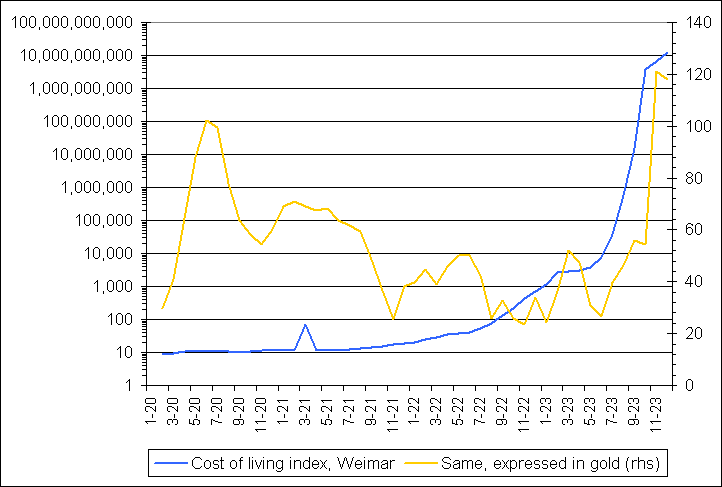
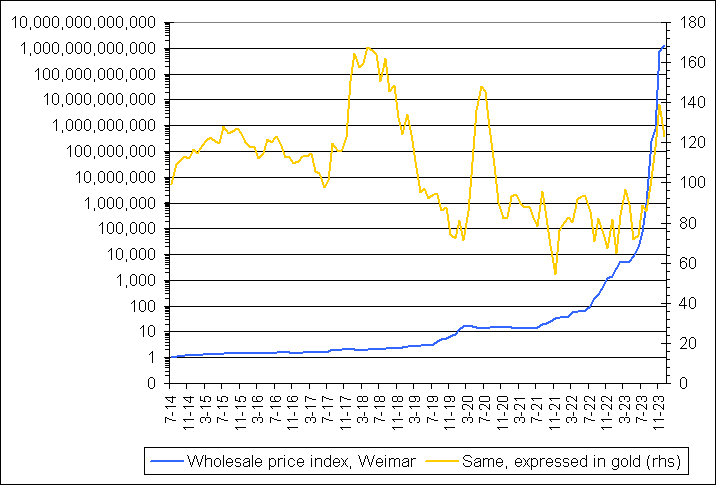
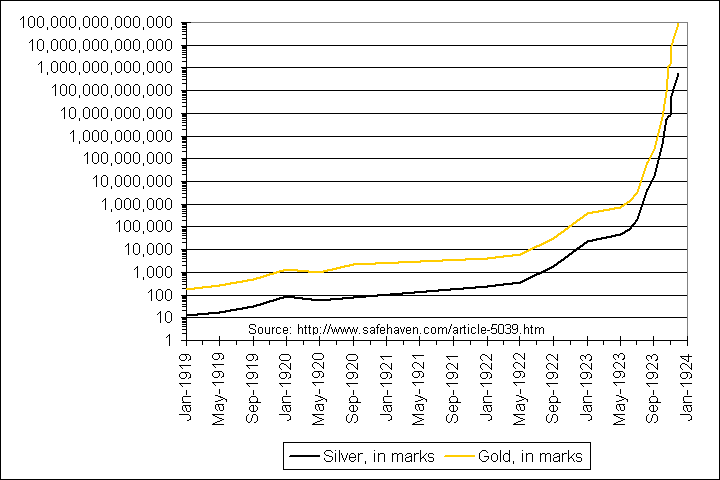
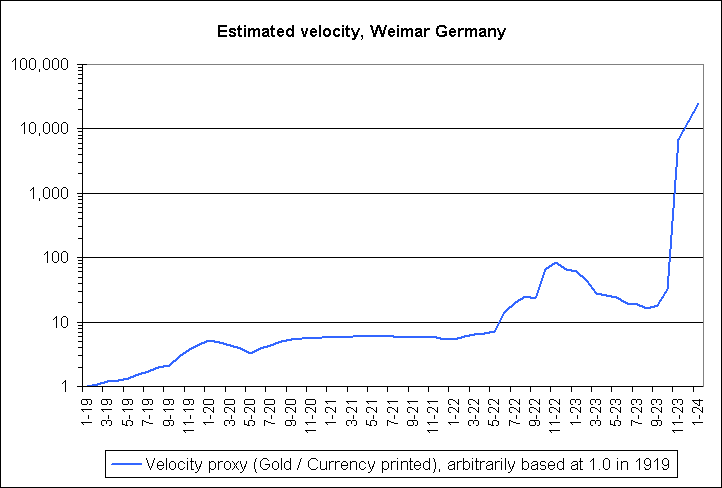

Click here to see an image of a gold mark.
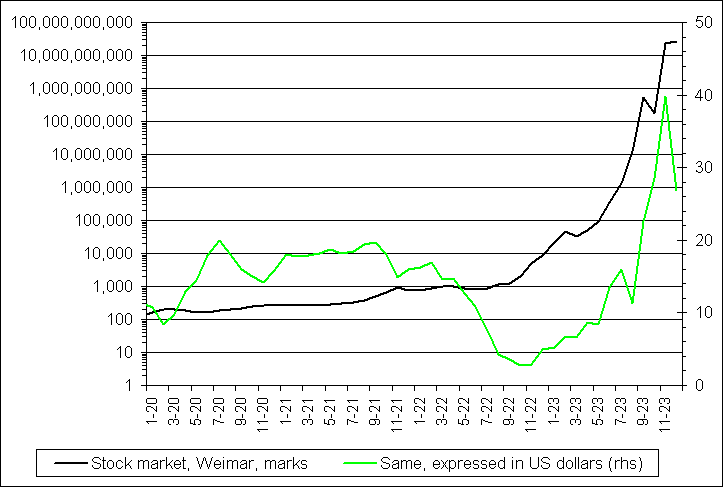
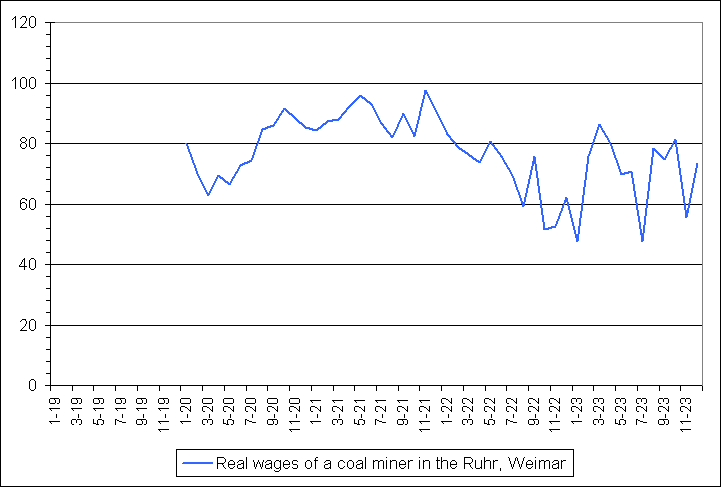

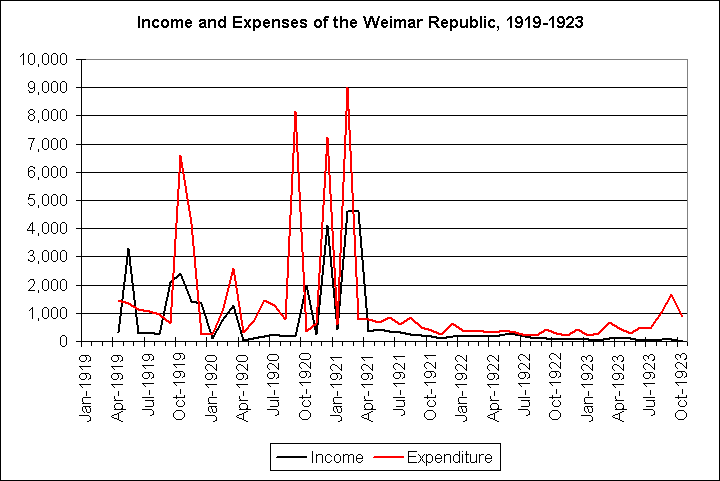
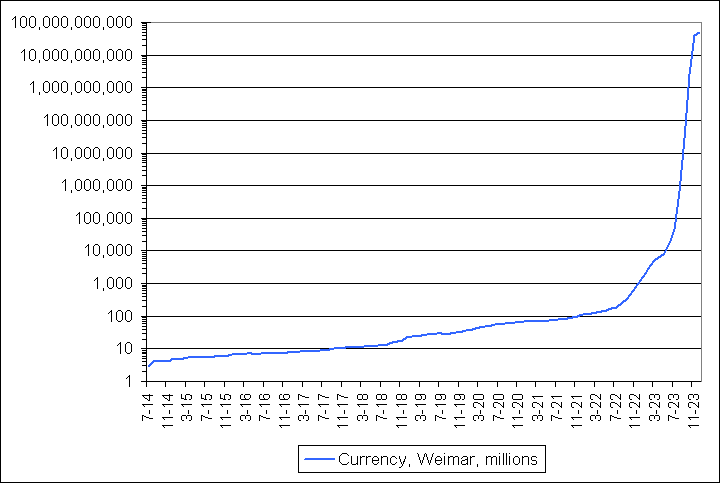

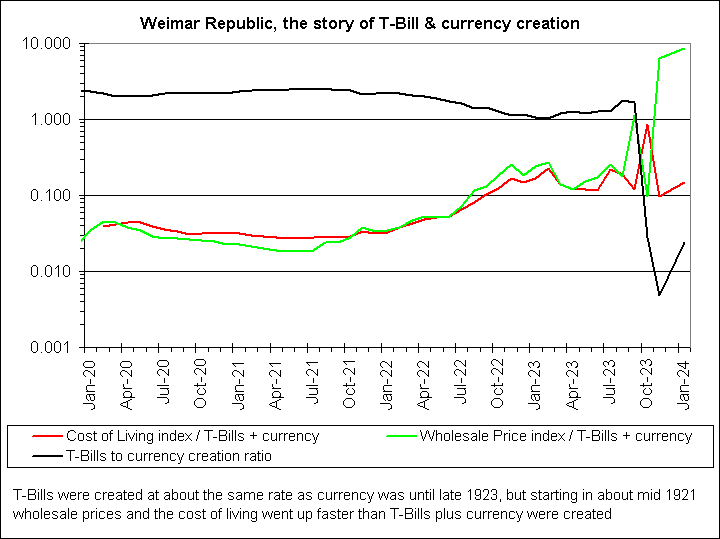
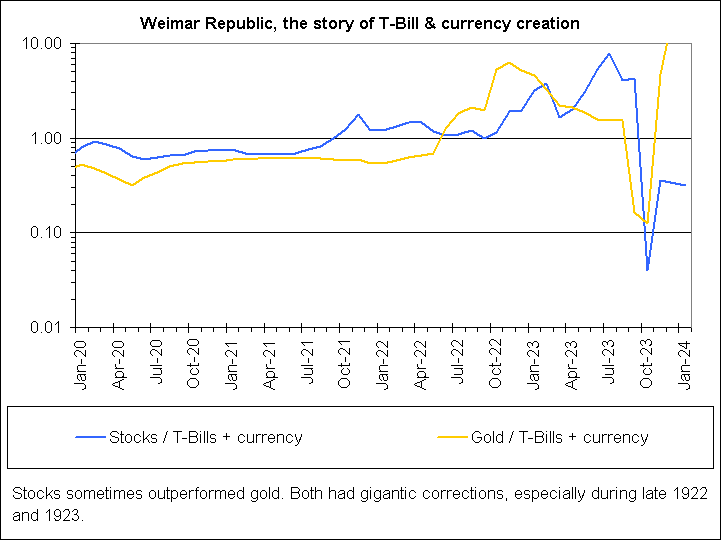

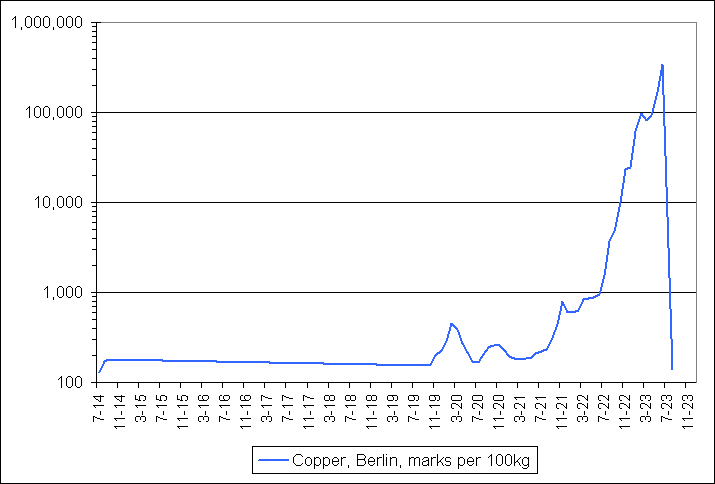

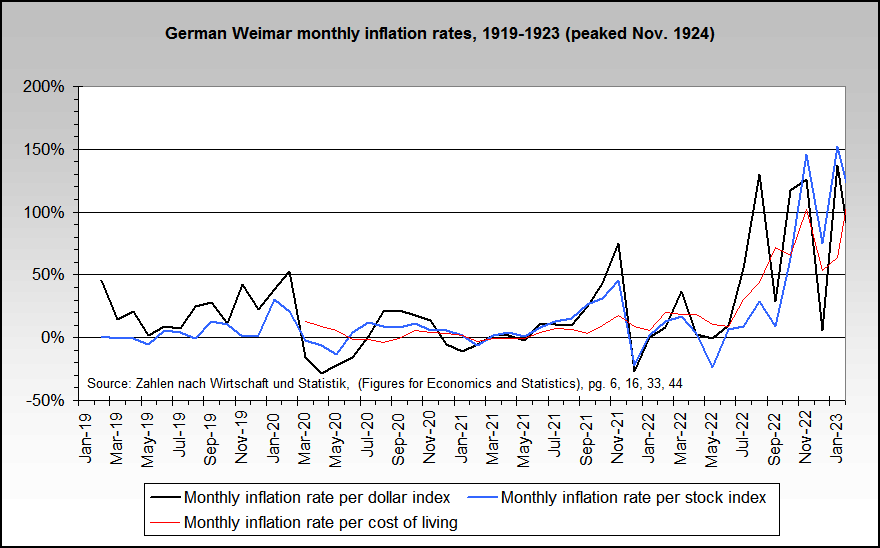
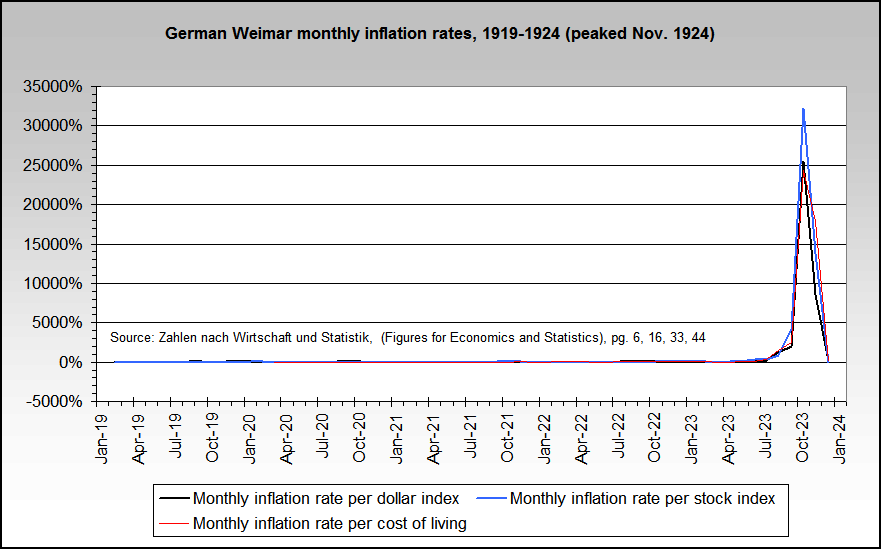
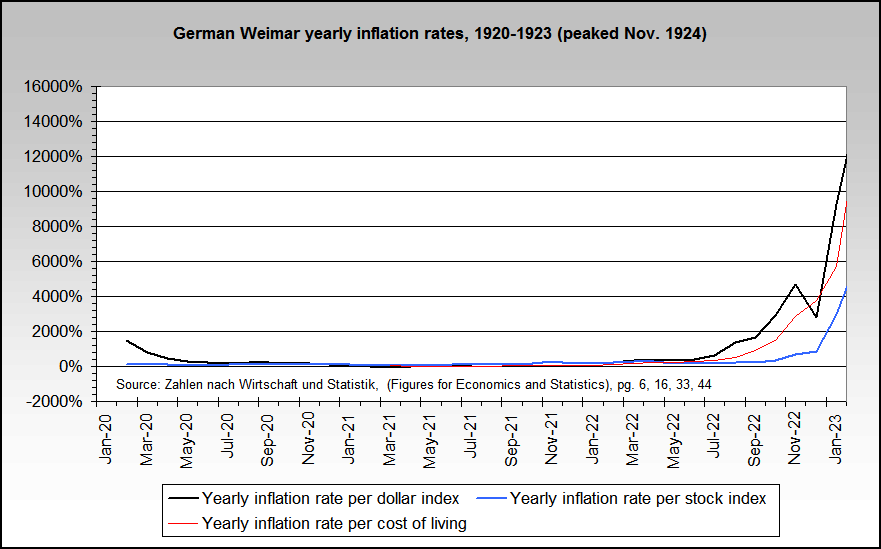
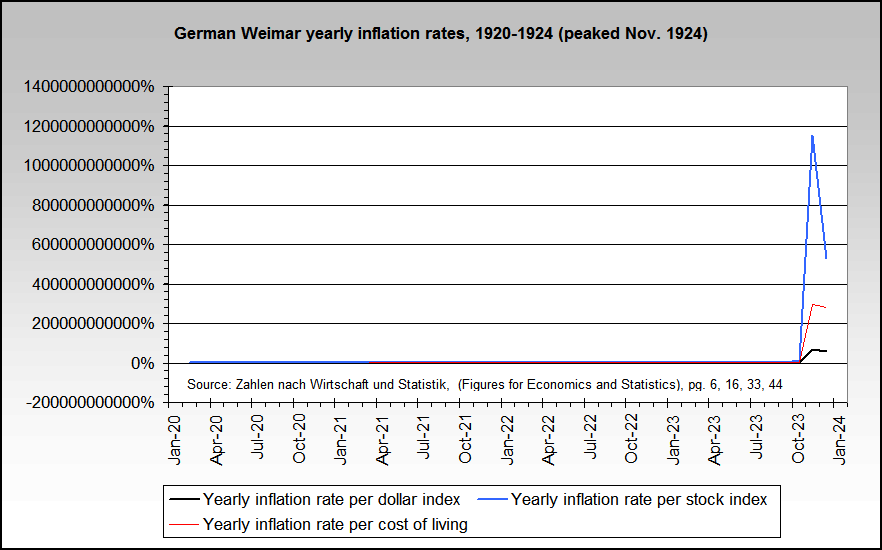

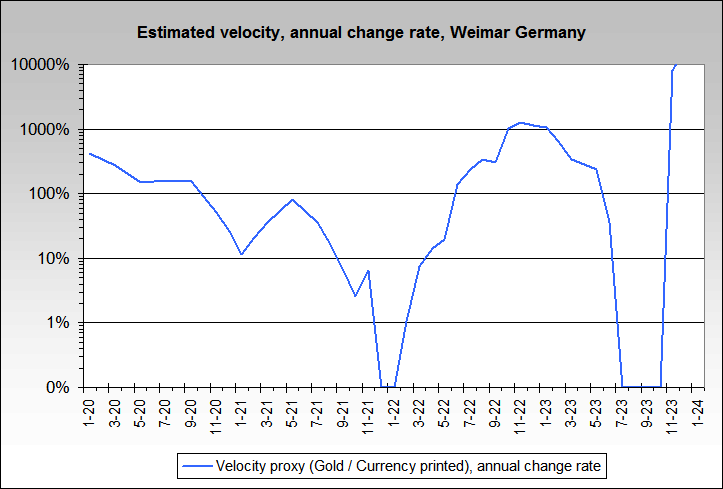


Real example:
In the middle of 1914, just before the war, a one pound loaf of bread cost 13 cents. Two years later it was 19 cents. Two years more and it sold for 22 cents. By 1919 it was 26 cents. Now the fun begins.
In 1920, a loaf of bread soared to $1.20, and then in 1921 it hit $1.35. By the middle of 1922 it was $3.50. At the start of 1923 it rocketed to $700 a loaf. Five months later a loaf went for $1200. By September it was $2 million. A month later it was $670 million (wide spread rioting broke out). The next month it hit $3 billion. By mid month it was $100 billion. Then it all collapsed.
-- per Art Cashin
Data from "The Economics of Inflation", by Constantino Bresciani-Turroni except as noted

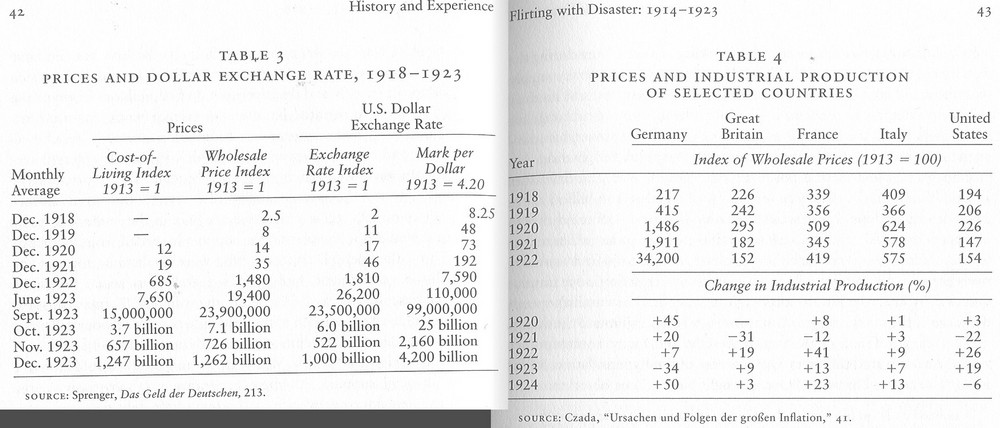




























![]()